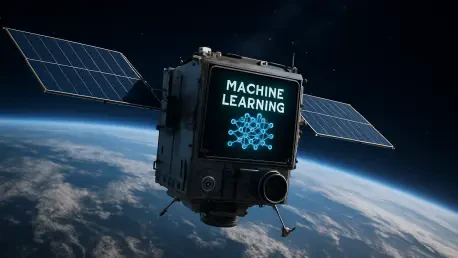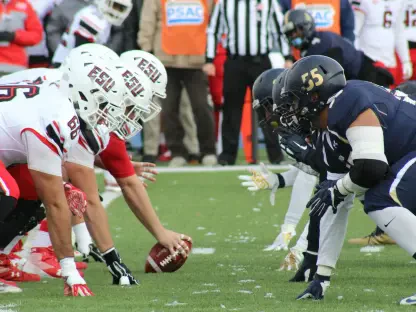In a groundbreaking stride for student-led innovation, a team of undergraduate and graduate students from the University of Pittsburgh has embarked on a remarkable journey to integrate machine learning into space technology. Collaborating with industry giant Lockheed Martin through the SHREC (Spacecraft Hardware Research and Engineering Center) program, these students have successfully deployed advanced applications on the LINUSS CubeSat, a small satellite orbiting in geostationary orbit (GEO) approximately 22,000 miles above Earth. This endeavor not only showcases the potential of tiny satellites to perform complex tasks but also highlights the ingenuity of young minds tackling real-world challenges in space engineering. Their work addresses critical issues like memory constraints and data efficiency, setting a new benchmark for academic contributions to the aerospace field. As space missions increasingly rely on cost-effective solutions like CubeSats, such projects underscore the growing importance of innovative thinking in orbit.
Breaking Barriers in Space Technology
The primary challenge for the Pitt students lay in navigating the severe limitations of CubeSat satellites, which are often smaller than four inches and possess minimal computational power. These constraints significantly impact essential functions such as image capture and data transmission, often leading to inefficiencies in satellite operations. Two students, Nischal and Dikchhya, took on distinct yet complementary projects to address these hurdles. Nischal focused on developing a machine learning-based image compression method known as CNN JPEG. While this application performed admirably during Earth-based testing on a ZCU102 computing board, it ultimately proved too resource-intensive for the satellite’s limited memory. This setback provided a valuable lesson in the disparity between theoretical models and practical deployment, emphasizing the need for optimized solutions in space technology. Nischal’s ongoing efforts to refine this tool reflect a commitment to overcoming these technical barriers for future missions.
Meanwhile, Dikchhya achieved a significant milestone by designing a smaller, efficient machine learning model for autonomous onboard image classification. Satellites frequently capture vast quantities of irrelevant images, such as empty ocean expanses or cloud cover, which consume precious memory and bandwidth, delaying critical data transmission. Her model, trained with Gretok, dissects large images into smaller tiles and filters out redundant data by categorizing them effectively. Using the same ZCU102 board, Dikchhya programmed and packaged the application, which was seamlessly integrated into LINUSS by Lockheed Martin. The model operated flawlessly in orbit, accurately classifying images and marking a historic achievement as one of the first instances of Pitt undergraduate work functioning in GEO. This success demonstrates the potential for machine learning to revolutionize how small satellites manage data under constrained conditions, paving the way for more efficient space operations.
The Power of Industry Collaboration
A crucial element of this project’s success stems from the partnership between the University of Pittsburgh and Lockheed Martin, which provided students with unparalleled access to real-world space engineering challenges. This collaboration enabled remote participation in testing and deployment, offering hands-on experience that academic coursework alone could not replicate. For students like Nischal and Dikchhya, who progressed from inexperienced undergraduates to seasoned SHREC graduate students, the journey was transformative. They encountered unique obstacles, such as adapting to the harsh realities of satellite hardware limitations, which demanded creative problem-solving and resilience. This exposure not only honed their technical skills but also prepared them for future careers in the rapidly evolving field of space research, where practical expertise is invaluable. The industry connection bridged the gap between theoretical learning and applied innovation, creating a fertile ground for groundbreaking achievements.
Faculty members, including Silbernagel and George, have emphasized the immense value of such university-industry collaborations in fostering experiential learning. These partnerships place students at the forefront of high-stakes projects, allowing them to contribute directly to advancements in space technology. The trend of integrating machine learning into satellite operations is gaining momentum, especially as missions increasingly depend on compact, cost-effective CubeSats. This project highlights how such initiatives can address pressing needs like data management in orbit, where traditional methods often fall short. By working alongside industry leaders, students gain insights into the complexities of space missions, learning to navigate both technical and logistical challenges. This synergy not only benefits the individuals involved but also pushes the boundaries of what small satellites can achieve, signaling a shift toward smarter, more efficient space exploration strategies.
Reflecting on a Stellar Achievement
Looking back, the efforts of Pitt students in deploying machine learning on the LINUSS CubeSat stand as a testament to the power of determination and collaboration. Dikchhya’s model successfully operated in orbit, efficiently classifying images and optimizing data usage under stringent conditions, while Nischal’s ongoing work on image compression highlights the persistent challenges that future innovations must address. The partnership with Lockheed Martin proved instrumental, offering a platform for real-world application that elevated academic learning to new heights. As the field of space technology continues to evolve, the next steps involve refining these technologies to overcome memory and bandwidth limitations, ensuring that even the smallest satellites can handle complex tasks. This project sets a precedent for student involvement in cutting-edge research, suggesting that future collaborations could unlock even greater potential in orbit. The lessons learned here will undoubtedly guide subsequent missions, inspiring a new generation of engineers to reach for the stars.









